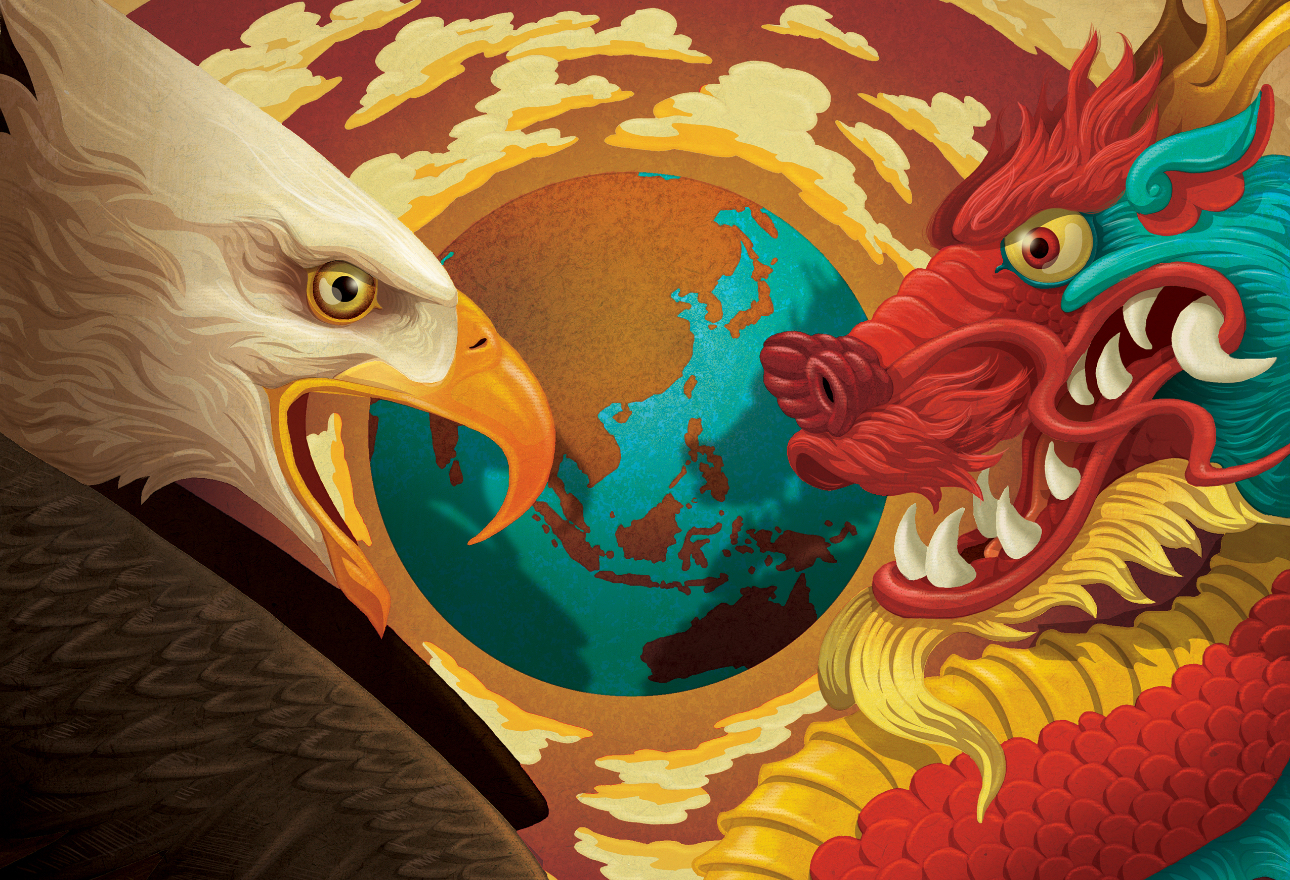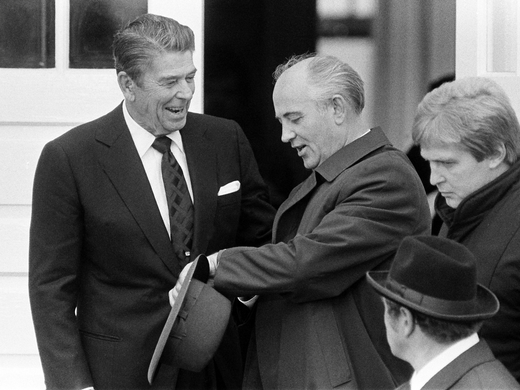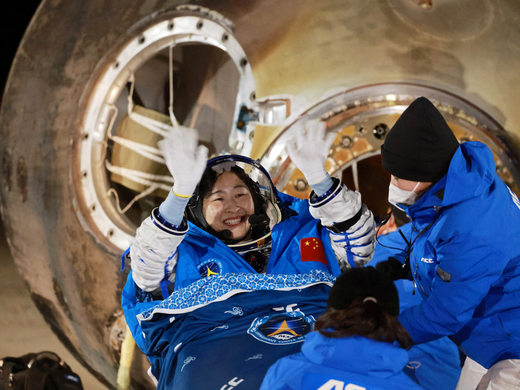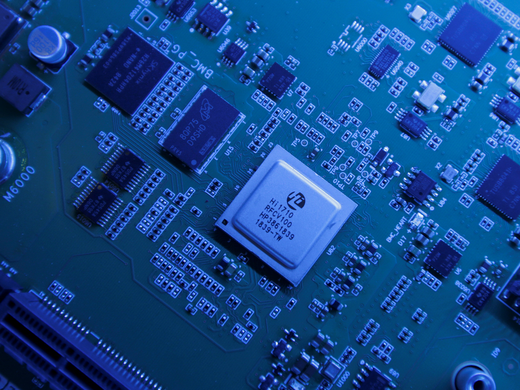If there’s one thing American presidential hopefuls will agree on this year, it’s that the country needs to get “tough on China,” stoking what many observers are calling a new Cold War. Last year’s updated export controls on advanced computer chips, the Biden administration’s executive order to boost the US biotechnology industry, and large investments in automated, uncrewed weapons systems were all designed with this supposed new Cold War — and the fear it might turn hot — in mind.
However, the capabilities that make these technologies important also make them dangerous. Technology competition today cries out for new thinking about foreign policy that considers global risks and remains open to cooperation with rivals on critical issues.
Clearly, military innovation is among America’s strengths. On several occasions, the United States has successfully pursued an “offset” strategy, countering an adversary’s military strength by inventing new technologies, such as advanced communication systems and precision-guided munitions.
In the twenty-first century, though, the risks of all-out technology competition are unacceptably high. That’s because China is a powerful competitor, strong enough to pursue its own offset strategy. And as we’ve argued in a new research report for Founders Pledge and CIGI, the race to be first in developing emerging technologies such as artificial intelligence (AI), synthetic biology and novel weapons systems could lead to disastrous accidents and proliferation. In fact, such technologies may be so powerful that these outcomes could threaten not only the United States and China but also the world at large — even if this new Cold War never turns hot.
Indeed, twenty-first-century technologies require twenty-first-century foreign policies. American leaders can and should defend their nation’s interests without presenting existential risks for the entire world. Technology competition thus needs to be paired with a new “safety race.” By developing a culture of safety, institutional safeguards and defensive technologies, the United States can maintain a technological advantage without pushing humanity to the brink. A saner and safer competition would leave everyone better off.
Seeking economic and military advantages, the Americans and Soviets each went to great lengths to develop and deploy powerful new technologies first.
Cold War 2.0?
In many ways, claims of a new Cold War are overblown, or at least oversimplified. For a start, the American economy in 2024 is far more entwined with the Chinese economy than it ever was with the Soviet Union’s. China also seems, to date, less expansive than the Soviet Union was. While the United States and China may compete for influence in the Indo-Pacific, they appear to have little appetite for fighting expensive proxy wars to force regime change on other countries, Beijing’s hopes for control of Taiwan notwithstanding.
In the technological realm, though, the new Cold War frame rings true. That conflict was defined by technology competition. Seeking economic and military advantages, the Americans and Soviets each went to great lengths to develop and deploy powerful new technologies first. The most famous example is the space race. But this competition extended to computer chips, missiles, sensing technologies such as radar, and biotechnology.
Ironically, this competition brought tangible benefits to humanity. The US military’s hunger for computing power spurred innovation in, for example, the semiconductors that enabled the digital revolution. In addition to the many other technologies that bloomed amid the competition — Apple’s Siri originated from SRI International, which the Defense Advanced Research Projects Agency supported, for instance — heightened investment in basic research arguably had major spillover effects for productivity, economic growth and well-being worldwide.
Yet this competition was also highly risky. In the race to deploy powerful technologies quickly, safety took a back seat. As former US Secretary of the Navy Richard Danzig has pointed out, America’s strategy was akin to playing “technology roulette”: unconstrained competition for technological military superiority created sprawling secretive bureaucracies, paranoia over rivals’ intentions and a “race to the bottom” on safety. The accidents and close calls we know about are likely only a declassified fraction of the times we flirted with annihilation during the Cold War. The Soviet Union’s biological weapons program, too, led to dangerous pathogens, including anthrax and smallpox, accidentally escaping from shadowy laboratories multiple times.
The Choice Before Us
Today, the United States and China are similarly competing for supremacy in realms such as AI, missile technology, telecommunications technology including 5G (fifth-generation) wireless networks, and biotechnology. In many cases, such as in the production of solar panels, this competition brings mutual benefit, allowing each country to invest in its comparative advantage to accelerate progress overall.
But especially when it comes to technologies with important military applications, this competition also looks like a perilous new round of technology roulette. And, while our international political system has remained largely unchanged since the end of the Second World War, the power of our technologies has advanced in leaps and bounds. Through our technological prowess we’ve gained the capacity for self-destruction. First came nuclear weapons. In the twenty-first century, artificial superintelligence, advanced biotechnology, autonomous weapons and other emerging technologies will add more bullets to the gun.
So we stand at a crossroads. Some roads lead to prosperous futures where technology supports human development. Others lead to ruin. Which road we take depends on how the superpowers manage the development of these transformative technologies.
Mapping the Road to Ruin
There are at least three broad ways that US-China technology competition could lead to a global disaster: war, accidents and proliferation.
The first way — war — seems obvious. The crises of the Cold War show how a Cold War could easily turn hot, and the mistrust and tension between the United States and China — combined with major problems with crisis communication links such as the nuclear “hotline” — have many analysts worrying about the next world war. Technology competition makes war more likely by sowing mistrust, and makes war worse by equipping rivals with an ever-expanding arsenal of weaponry.
But perhaps more insidiously, technology competition can lead to catastrophe even if a shooting war doesn’t break out. Accidents happen. We’ve already seen how the Soviet bioweapons program led to lab leaks. Progress in biotechnology has made it easier to potentially engineer preternaturally dangerous pathogens. And if not properly designed and tested, AI systems could have surprising, harmful effects when deployed in the real world. Technology competition is likely to drive investments in both these fields, as well as in other high-risk technology sectors.
Then there’s the risk of proliferation to other dangerous actors. These technologies could be very useful to rogue states or terrorists, or even to extreme groups like Aum Shinrikyo, the Japanese doomsday cult responsible for the 1995 Tokyo subway attacks. They may try to obtain powerful AI technologies by stealing the model weights, the crucial numbers that control how an AI model processes information and makes decisions. Similarly, as biotechnology becomes cheaper and more accessible, they may try to acquire information about lethal pathogens and state biodefence strategies. Current cyber defences may not be advanced enough to protect these critical technologies against espionage attempts.
Staying on the Right Road
But we are not doomed. A more responsible kind of competition is possible. In our report, we highlight specific policy actions we can take to mitigate these risks. For example, the intelligence community could implement better probabilistic forecasting techniques to ensure that decision makers can exercise good judgment and sober analyses of any claims of “falling behind.” At the same time, we need a broad mindset shift in how we approach technological competition — accounting for existential risks to constrain the intensity of technological competition. To satisfy the would-be new Cold Warriors, this can still be framed as a “race” — but this time, a race for safety.
In pursuing such a race, the United States can ensure it has reliable and effective military systems without imposing undue risk on its citizens, or on the world. This means remaining open to cooperation with China on critical issues. In other words, our diplomacy must be updated to keep pace with our technology. This may mean agreeing to mutual safety practices, such as keeping AI systems out of nuclear command and control. It may mean maintaining some mutual openness for monitoring and verification even in such critical sectors as AI and biotechnology. It may mean maintaining and updating hotlines and dialogues to avoid dangerous misunderstandings and accidents.
These will be difficult actions to take, to be sure. They’ll face opposition from people committed to winning in the twenty-first century just as they won in the twentieth. But a new era requires new thinking. And giving up on all cooperation means succumbing to a reckless race neither state can afford.



